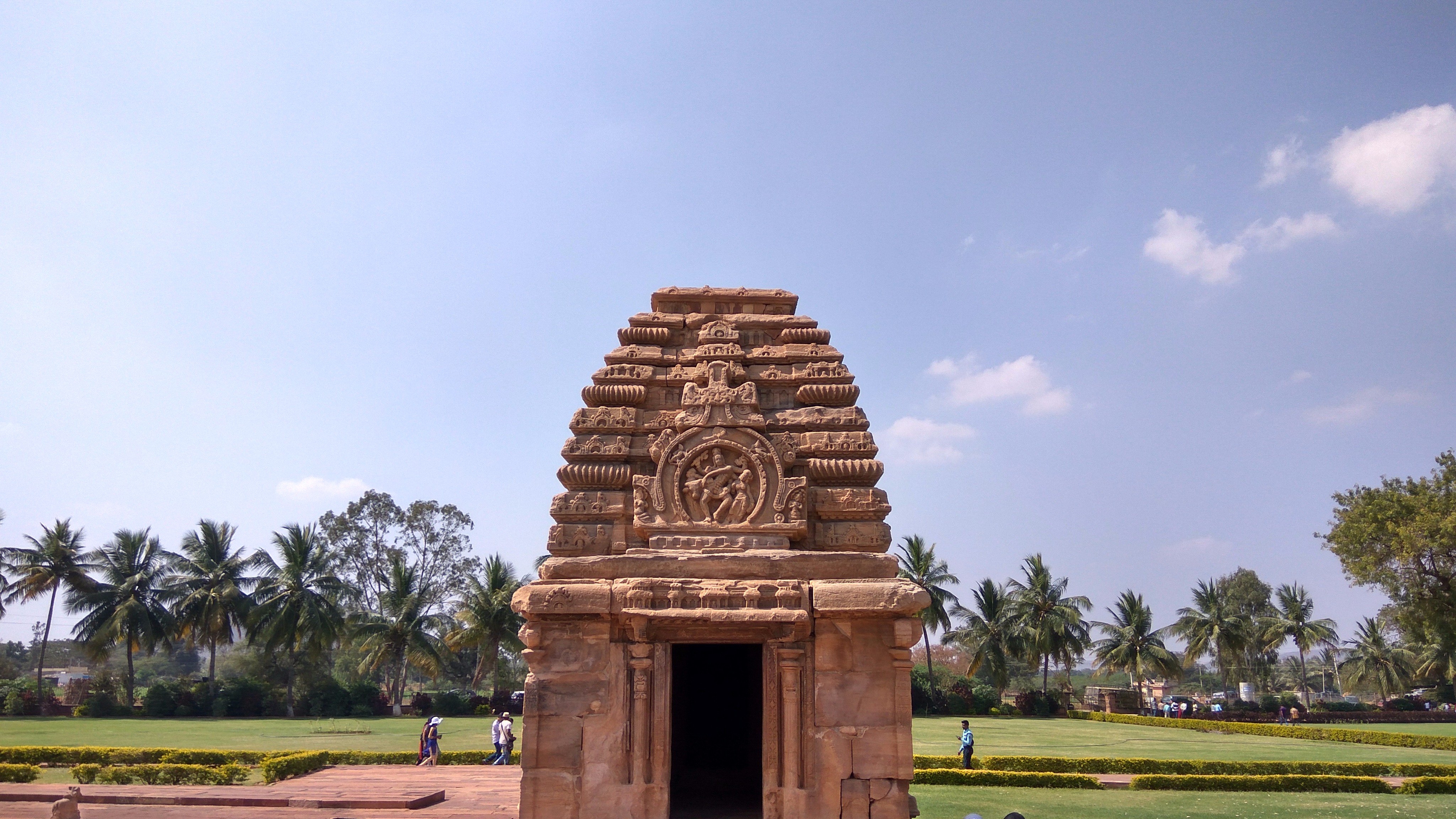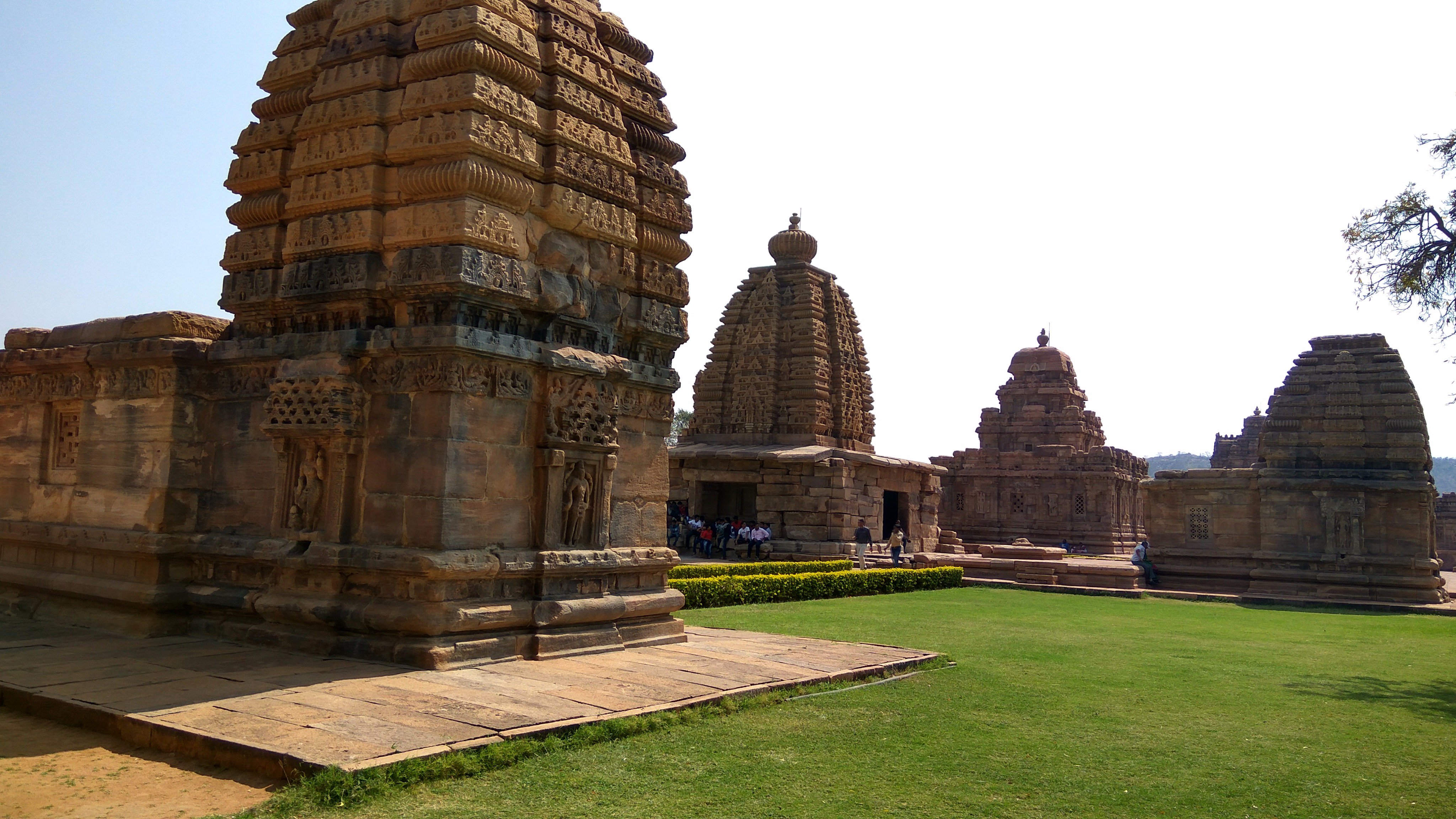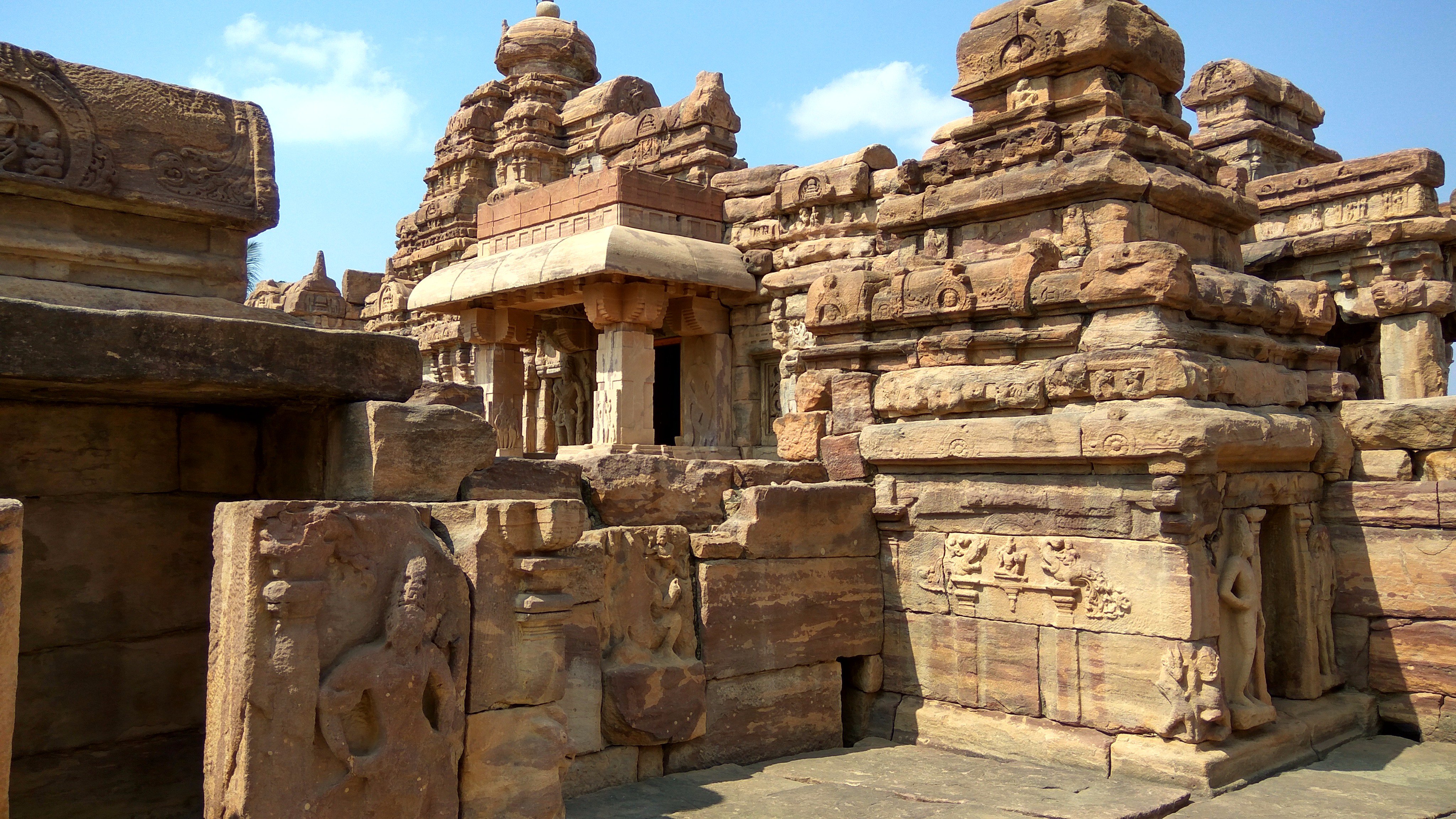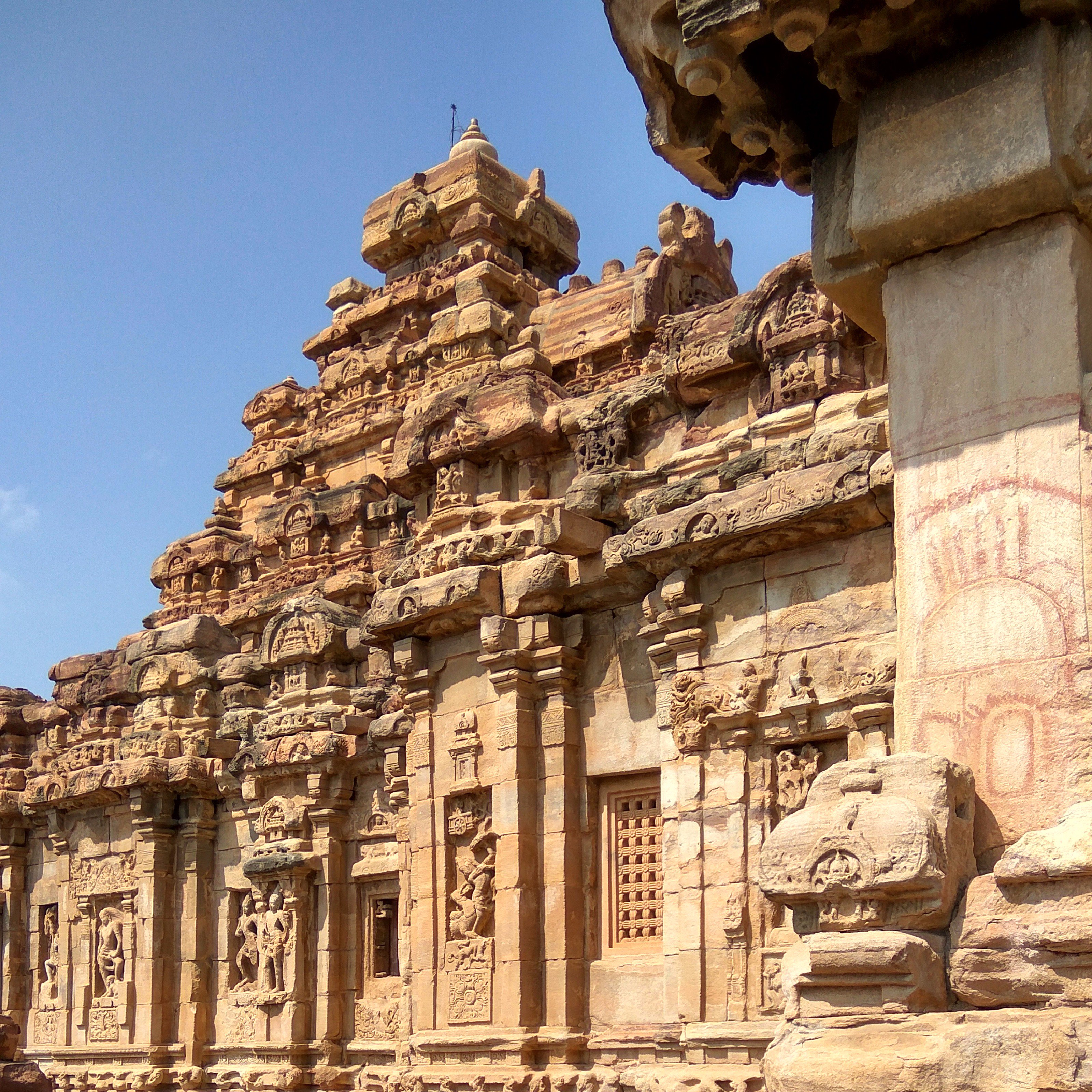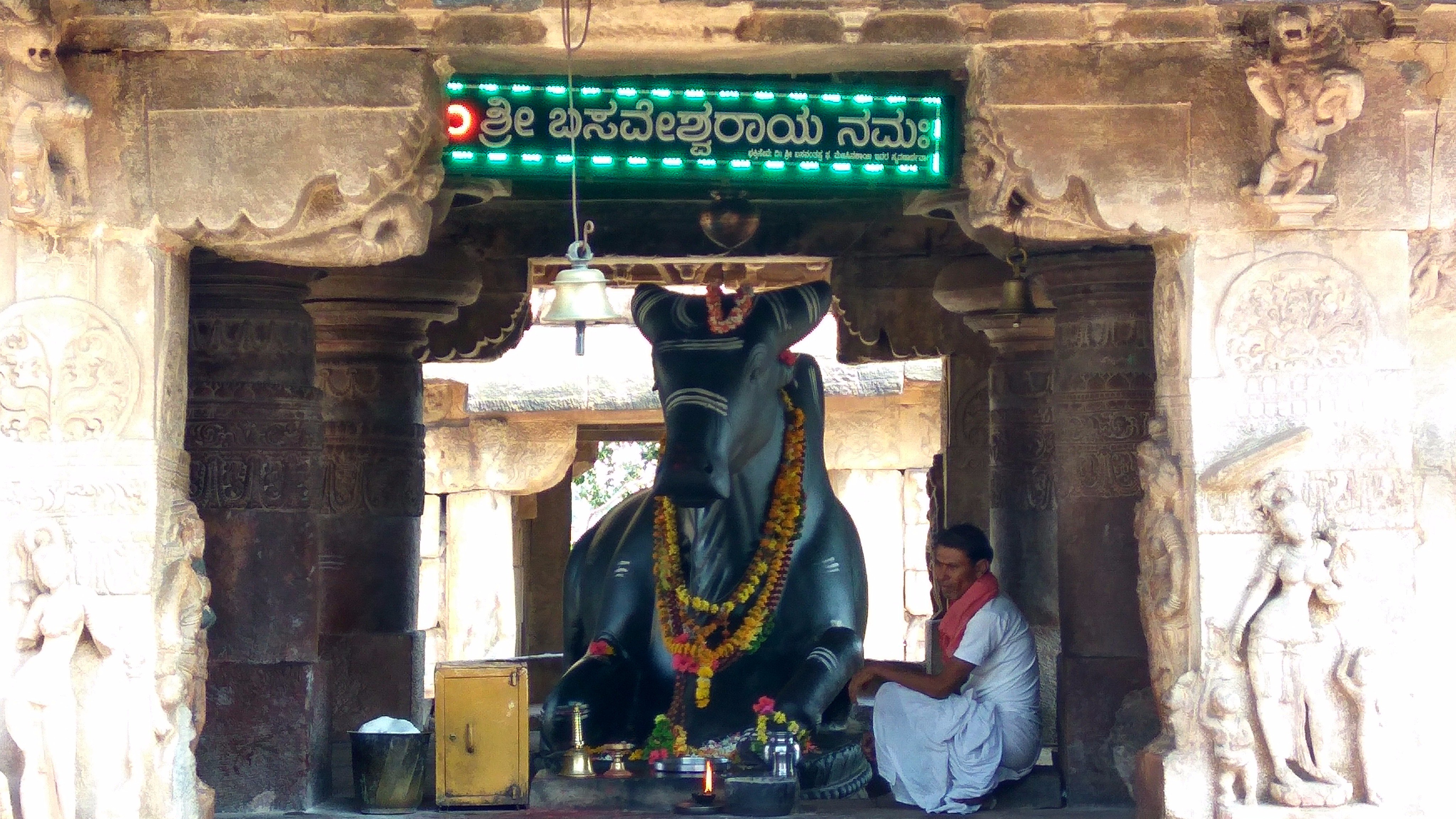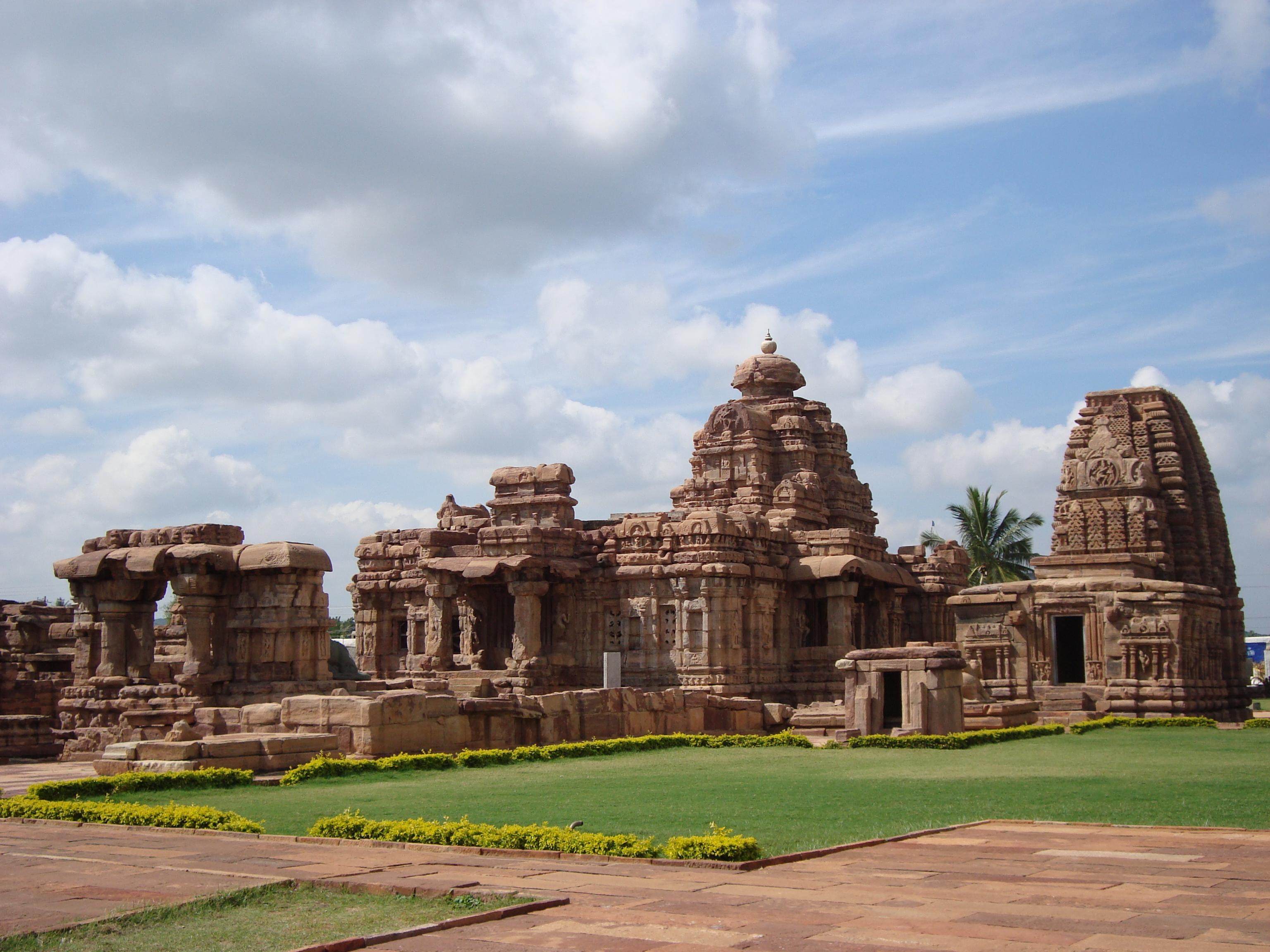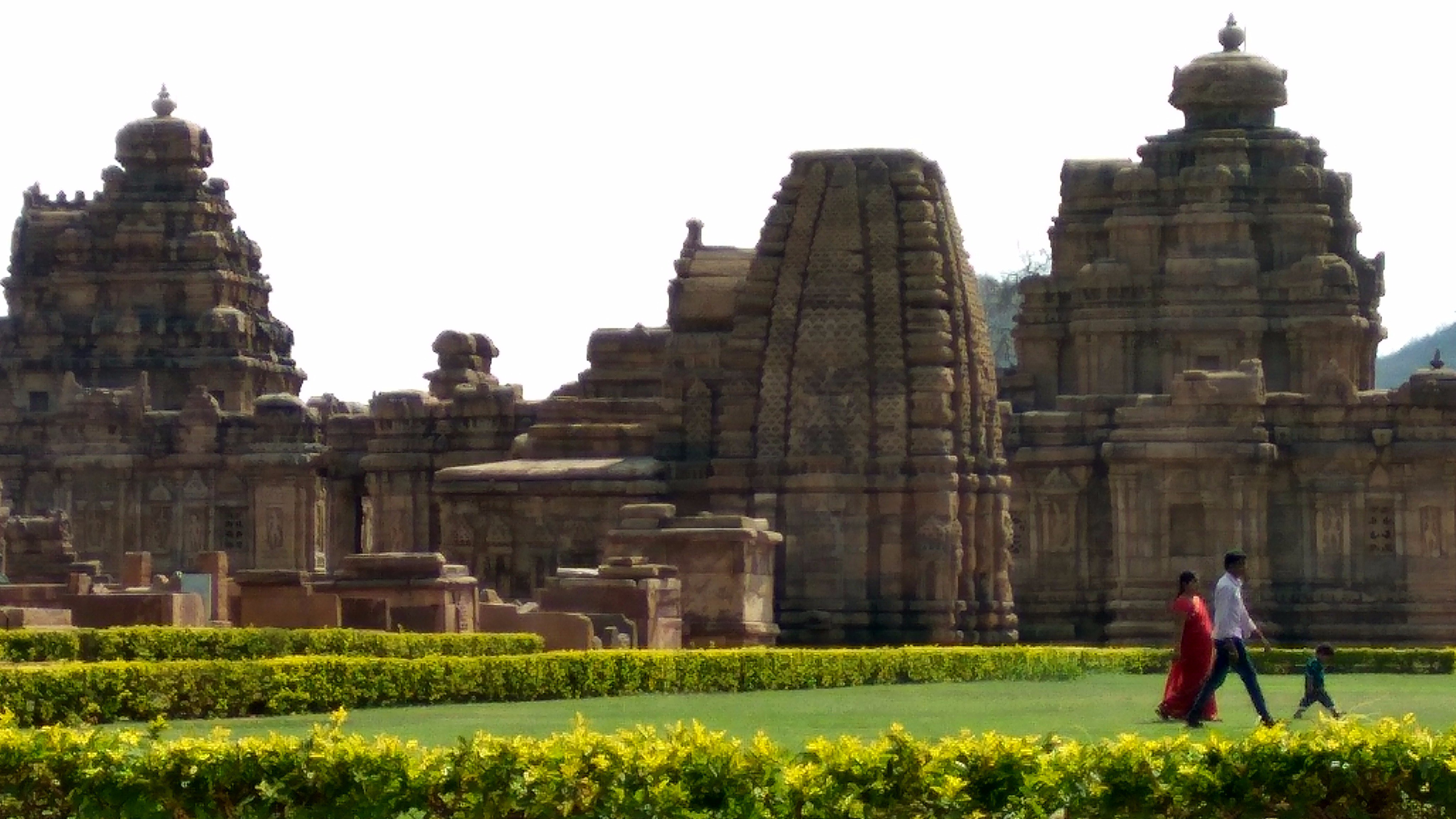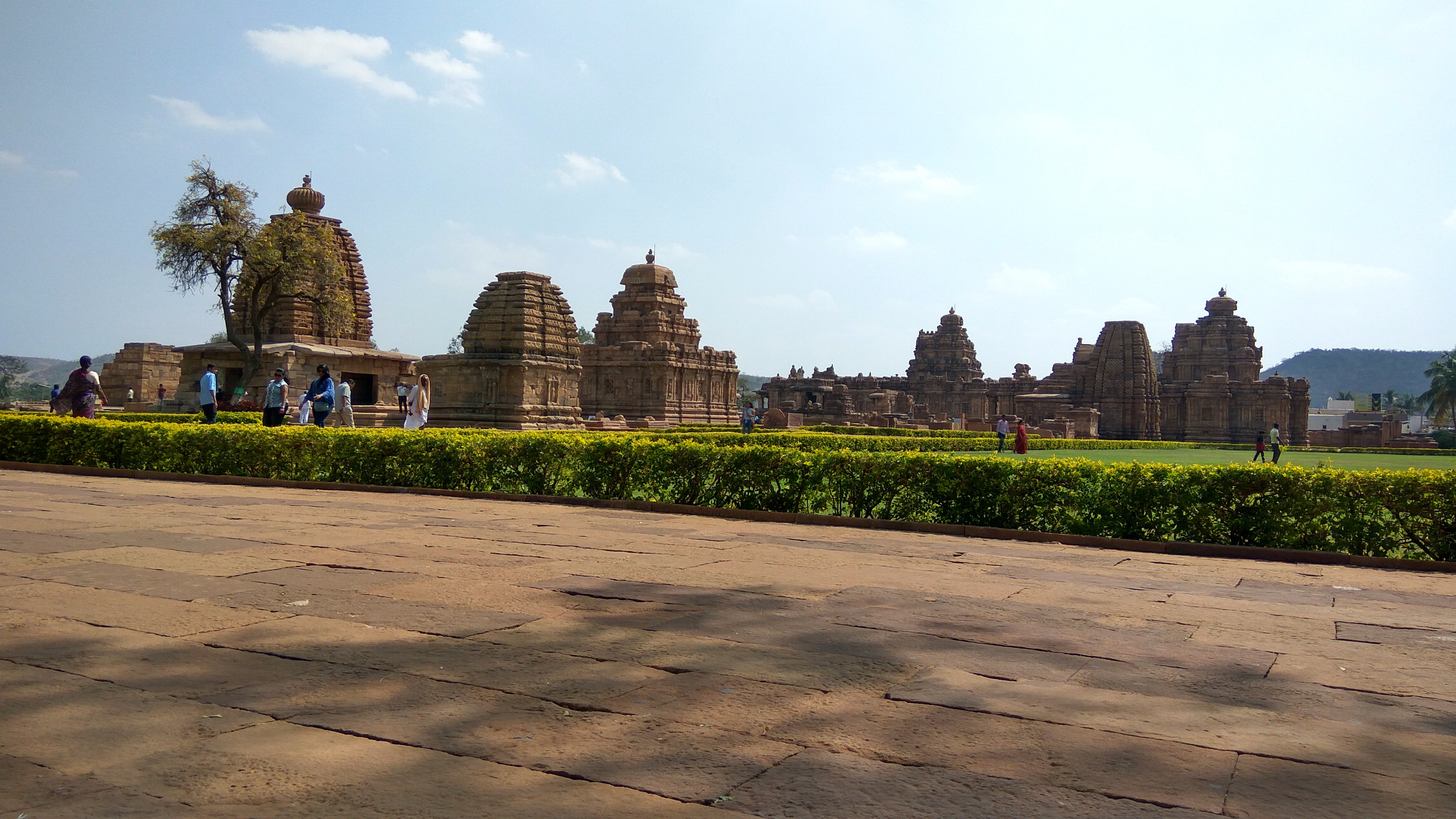Group of Chalukyan era temples at Pattadakal, Karnataka. Built between 6th and 7th century. These ancient temples can be described as a wonderful laboratory experiment of various different Hindu styles of architecture. From Dravida to Nagara styles & various other styles. The result is a stunning group of temples like none other.
One of the 1st temples than you encounter as u make your way through this huge ancient temple complex is this Jambulinga Temple. This is the front & side facing side of the temple. Built in Nagara style, it features a splendid carving of Shiva,Parvathi & Nandi.
There is also a Nandi facing the temple, as seen in the picture its in a very weathered condition. Garbagudi houses a lingam
 |
| Front view of Jambulinga Temple |
This next temple just adjacent to the Jambulinga temple is the slightly bigger in size Galaganatha Temple, dedicated to Lord Shiva again. It does have some structural damage. This is the rear side of the temple(where people are sat). In the foreground is the Jambulinga temple.
 |
| Galaganatha Temple |
The very next temple is the Sangameswara Temple dedicated to Lord Shiva. This temple is completely different architecturally from the rest.Built in south Indian Dravida style in the late 6th century. 3 temples of Jambulinga, Galaganatha & Sangameswara all in one shot.There are plenty of smaller shrines. This is the ruins in front of the Sangameshwara temple, all the Nandis beheaded by islamic invaders.
 |
| Sangameshwara temple |
Most prominent of all the temples at Pattadakal is the Virupaksha temple. It was built by queen Trilokyamahadevi in the mid 7th century.
The Virupaksha temple served as a blueprint for the Rashtrakutas, who'd later go on to build the Kailasa rock temple at Ellora, Maharashtra.The Virupaksha temple itself is an exact replica of the Pallava era Kailasanathar temple at Kanchipuram in Tamil nadu, albeit not in size.
Infact the Virupaksha temple was build to commemorate the Chalukyan victory over Pallavas & the victors chose Kanchi temple as inspiration.
A winner(chalukya) building a temple in their kingdom inspired by the architecture of their rivals(pallava). That's Hinduism in a nutshell.
Some of the intricate carvings inside the Virupaksha temple. Excuse me for the poor quality, the lightning wasn't good inside. Depicts Lord Shiva,Parvathi & Ganesha being attended to by the Ganas (Lord Shiva's army)
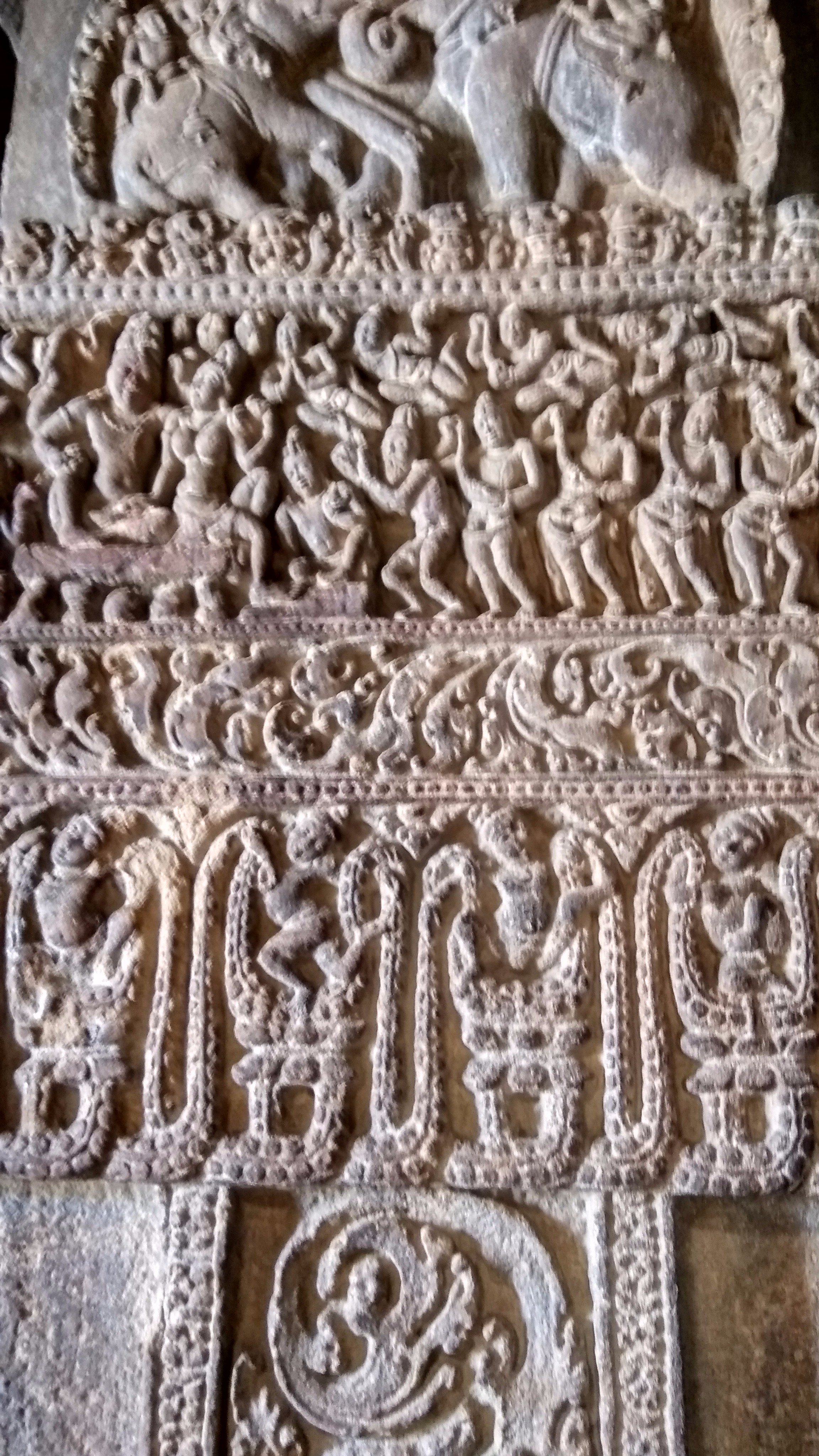 |
| Shiva,Parvathi & Ganesha |
This is the Nandi opposite the Virupaksha temple. Its relatively new, there is a very old one, badly damaged just behind this.
Two more prominent temples here are the Mallikarjuna and the Kashi Vishwanatha temples built in Dravida & Nagara style respectively.
Most of the lingams in garbhagriha destroyed by islamic barbarians have been replaced with new ones, but a few do remain, here's one. Painful.
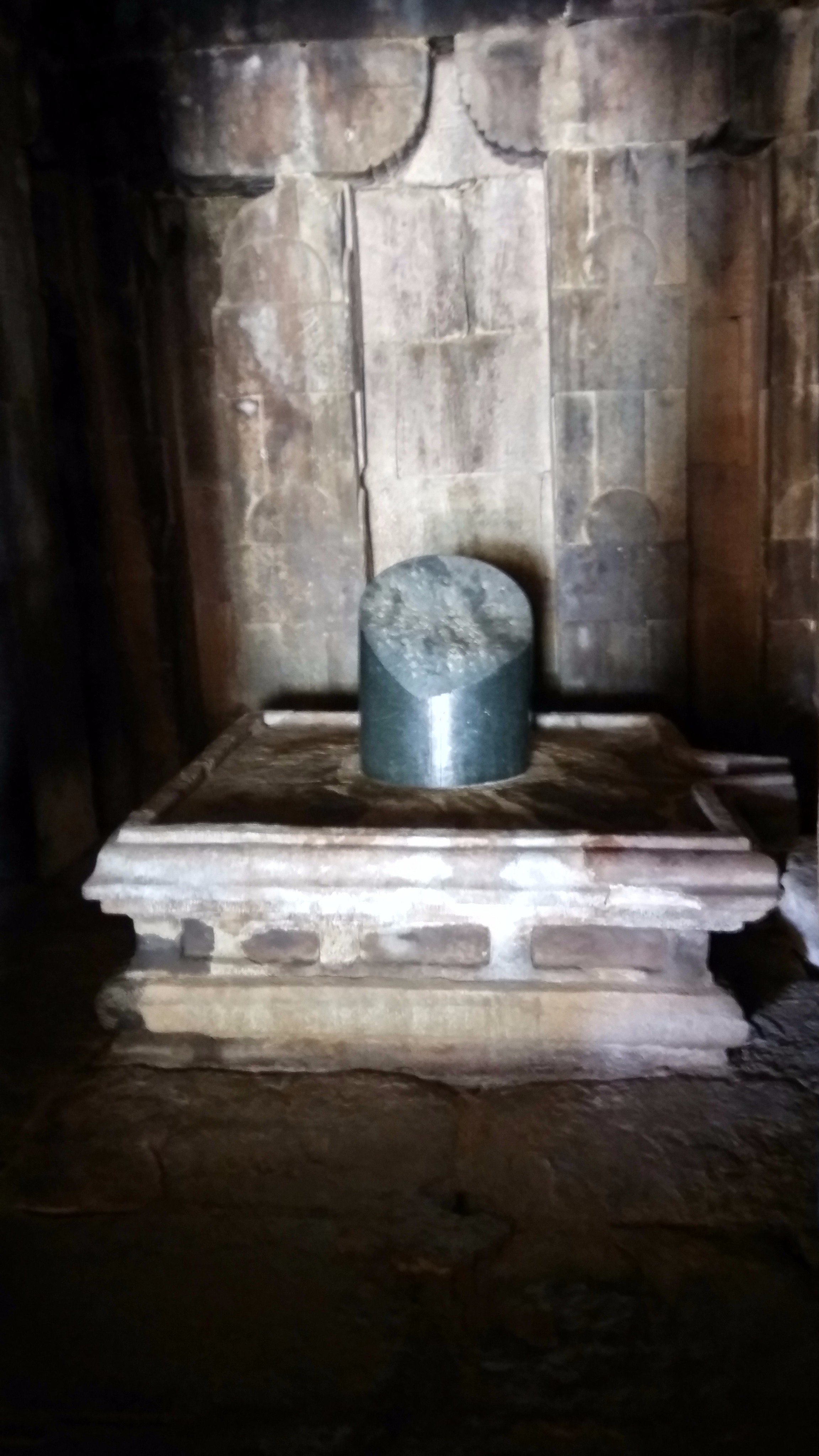 |
| Lingam destroyed by islamic invaders |
Keep saying the only thing that unites us all are our temples, beautiful example of it. We were always one people, bound by our temples
Entire temple complex in one shot. Pattadakal showcases the best of ancient Hindu India's architectural prowess.
Food for thought. This is the Kashi Vishwanatha temple at pattadakal, was built when the original one at Varanasi was still standing..An inspired scaled down version itself looks so exquisite...one can only imagine how grand the original one at Varanasi must've been...What a tragedy that replicas of the greatest of hindu temple stand,while the original at Kashi still continues to be under islamic occupation..
 |
| Kashi Vishwanatha Temple |

